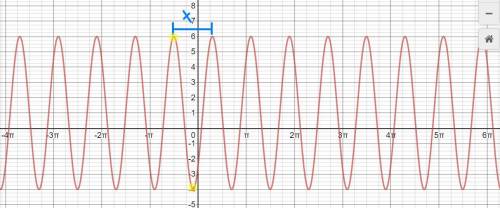
Physics, 09.10.2019 23:20 rebecca52360
You are watching a wave with a frequency of 512 hz go past. how many peaks of the wave go past you each minute?

Answers: 3
Another question on Physics

Physics, 21.06.2019 18:20
Let f(x) = x4- 8x2 . find the relativeextrema of this function using the second derivative test.
Answers: 2

Physics, 21.06.2019 22:00
In a wind tunnel the speed changes as the cross sectional area of the tunnel changes. if the speed in a 6' x 6' square test section is 100 mph, what was the speed upstream of the test section where the tunnel measured 20' x 20'? use conservation of mass and assume incompressible flow. conservation of mass requires that as the flow moves through a path or a duct the product of the density, velocity and cross sectional area must remain constant; i.e., that ova-constant. a model is being tested in a wind tunnel at a speed of 100 mph if the flow in the test section is at sea level standard conditions, what is the pressure at the model's stagnation point? (a) the tunnel speed is being measured by a pitot-static tube connected to a u- tube manometer. what is the reading on that manometer in inches of water? (b) at one point on the model a pressure of 2058 psf is measured. what is the local airspeed at that point?
Answers: 2

Physics, 21.06.2019 22:00
There is a theory that indicates that dinosaurs became extinct when about 65 million years ago, a large asteroid hit the earth surface. dust caused by this collision blocked the sunlight reaching the earth's surface and many forms of life became extinct due to the cold. fearing this threat, how large the radius of an asteroid should you be looking for if the dangerous asteroid size is approximately the same as the one that killed the dinosaurs? available data suggests that about 18% of that asteroid's mass ended up as a dust spread evenly over earth after eventually settling out of the upper atmosphere. about 0.0180 g/cm^2 of dust, which is chemically different than the earth's rock, covered the earth's surface. typical asteroids have a density of about 1.9 g/cm^3. now that we know the size of the asteroid, how much energy was released during impact, assuming all of it was just the kinetic energy of the asteroid right before the impact?
Answers: 1

Physics, 22.06.2019 11:30
4. a 75.0 g piece of ag metal is heated to and dropped into 50.0 g of water at the final temperature of the mixture is what is the specific heat capacity of silver? 5. a 465 g chunk of iron is removed from petrucci, ralph h.. general chemistry (p. 290). pearson education. kindle edition.
Answers: 3
You know the right answer?
You are watching a wave with a frequency of 512 hz go past. how many peaks of the wave go past you e...
Questions




Mathematics, 19.06.2021 01:30

History, 19.06.2021 01:30

Health, 19.06.2021 01:30


Mathematics, 19.06.2021 01:30



Social Studies, 19.06.2021 01:30


English, 19.06.2021 01:30

Mathematics, 19.06.2021 01:30

Mathematics, 19.06.2021 01:30

English, 19.06.2021 01:30










